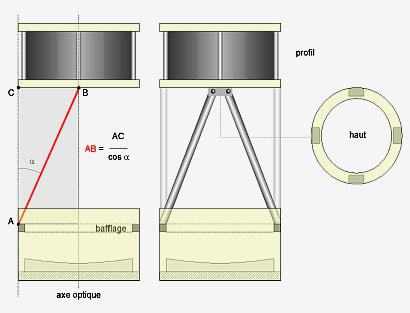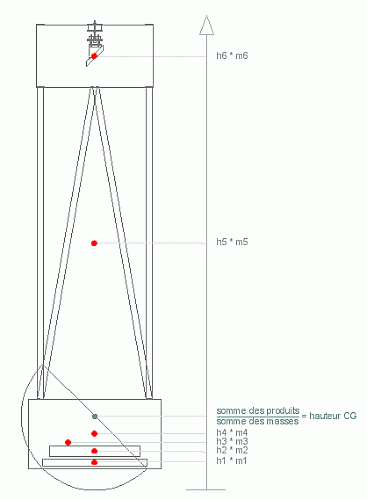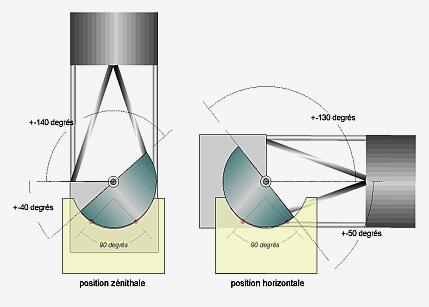What is a Dobson ? A Dobson is a Newtonian telescope on an altazimuthal mount. In one sense there is nothing new in the concept, John Dobson had the great merit to develop an instrument which could be built by whoever wanted to tinker and to make an instrument at lower cost. Of course, dobsons largely evolved and their manufacture asks for more detail as the requirements of the observers increase (see the construction of traditional dobsons on: http://tie.jpl.nasa.gov/tie/dobson/index.html )
|
|
|
| How are called the elements which make the dobson? Being better drawing than a long speech, here is a photograph which gives the names of the principal parts of the dobson.
|
|
|
| Which is the operation principle of altazimuthal mount? Mount, manual at the beginning, turns on a horizontal axis to aim in azimuth and on a vertical axis to aim in height.
|
|
|
|
How choose its mirror ? The framework of this page is much too narrow to consider this crucial question, it is necessary to refer to the page on optical quality (for now in French) to see the extent of the problem.
What is the contents of the primary box The primary box contains the mirror cell which supports the primary mirror. It is made out with plywood, polystyrene sandwich or also out of aluminum. The truss tubes come to be fixed inside or outside the box, its rigidity must be very high while being light.
What is the cell ? The cell is used to support the primary mirror, its role is very significant because it is necessary to preserve the qualities of the mirror. The diagram below makes it possible to see the elements which make a traditional 9 points cell, significant improvements can be made for that do not fail the page "lateral supports" and "astatic supports".
|
|
|
| How calculate the length of the truss tubes? Of course you should known the precise focal length ( be careful with the values announced by the manufacturer), then there are two methods; by calculation or a diagram. For calculation refer to drawing Ci below and the formula of trigo included; take care, to simplify, the tubes are traced until the angles of the primary box but, in reality they can't go until there without touching itself. The second method consists in making an outline on scale 1 on paper, and measuring desired dimensions. Although more rustic, I like much this second approach because it makes it possible to draw all the elements which make the scope in the real face, it's possible to avoid many errors. It is significant to draw the four faces, a sight of top or lower part for seeing the incompatibilities of design well.
|
|
|
| How calculate the center of gravity ? There is two ways to operate, calculating or testing it when everything is made. Calculating the CG before permit to avoid many errors. The diagram gives you the way to precisely calculate the CG.
|
|
|
|
Why pivots are only half circles? Only because it does not need to turn over the tube, it's enough to make a rotation of the whole in azimuth to aim at other side. Take an angle of 90° since the center of the pivots to position the Teflon pads on which they slip, but it's only indicative. Look at Astrosystem, Starsplitter, Obsession, you will see that the angle is lower than 90°. It is, on the other hand, significant to have a large diameter for the pivots, that makes it possible to be more tolerant as for balancing like having a greater softness of slip. The starting value is of 1Kg per cm2 of Teflon, from where interest to have a thickness of pivot between 20 and 40 mm to avoid big lengths of pads.
|
|
|
|
To follow... Thank you to José Devroede for the diagrams patiently carried out under control for Frederic Géa. |
|
|







